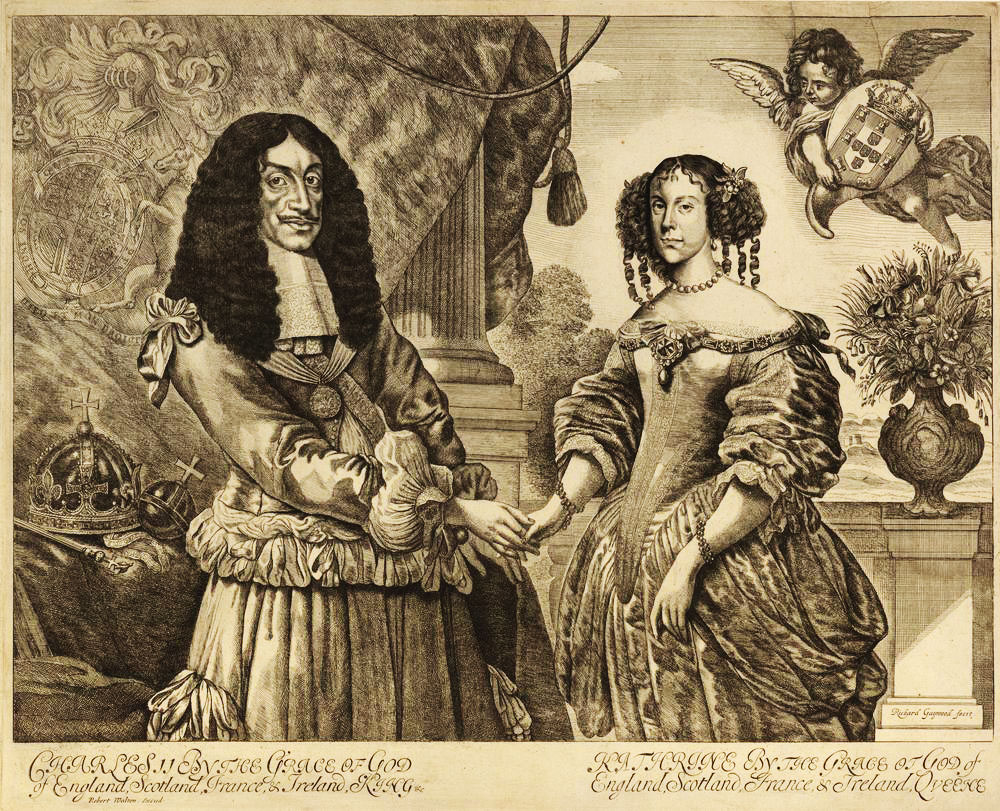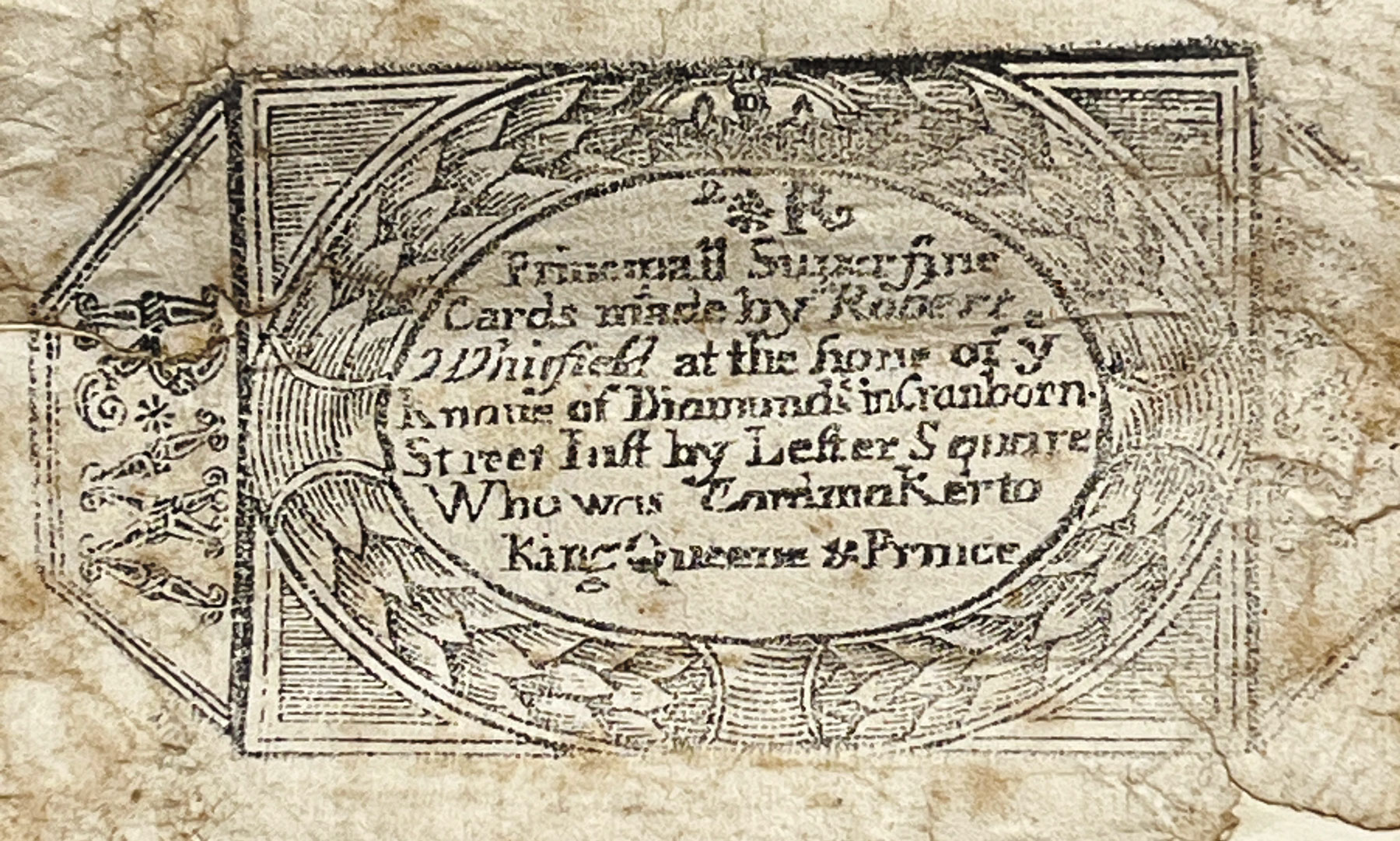English cards from the reign of Charles II
This article explores a historic pack of English playing cards from circa 1675, likely used by King Charles II and Queen Catherine, detailing their significance, history and unique features
In my previous introduction as “the Knave”, in Clear the Decks 2023 Q4, I promised to say more about a historic English standard pack that I acquired at auction last fall. The British newspapers and the BBC covered the story because it was said that King Charles II and Queen Catherine played with them. I gave my opinion that, as a collector, the King and Queen’s use of the cards was maybe the fourth or fifth most interesting thing about them. So now it’s time for me to present these more interesting things.

Above: a historic pack of English playing cards from circa 1675, likely used by King Charles II and Queen Catherine. The card backs are plain, in a light cream or off-white card colour. Dimensions are 61mm by 93 mm.
The first is that this pack still exists at all given it’s age: we will come back to the date, but for now let’s take it as circa 1675. Today, roughly 350 years after it was made, it is easily the oldest complete pack of standard English cards we know of. The next oldest whole packs are from the early 1700s. These are also very old - but come from decades later.
The pack was not known to playing card collectors and historians. It has been described as an ‘attic find’, kept in one family since the royal visit. There are two hand written notes; the first (below) looks contemporary with the visit and says:

Above: a handwritten note stating that these cards were played with by King Charles II and Queen Catherine.
“Cards that King Charles & Queen Catherine played with” while a later note says “Cards that King Charles and Queen Catherine played with at my great grandfathers Mr Amhurst of Riverhead in their way to Tunbridge Wells”.
Why would Charles and Catherine have been travelling to Tunbridge Wells? At the time the town we know today (pop. 60,000) had yet to be established and there was little there other than a health-giving chalybeate spa (one containing iron salts).
At this distance in time, we cannot say for sure, but we have found a very compelling suggestion. In Tunbridge Wells we find a church called King Charles the Martyr. Its timeline shows “1676: The first chapel is built, dedicated to King Charles”.
This would seem to provide just the reason for the royal visit: that Charles and Catherine were travelling to the formal opening of the new chapel dedicated, as it was, to Charles’s father. Quite possibly Charles had been asked to formally carry out the opening.
If this is correct, it tells us that the cards were made in or before 1676. On reflection, then, we owe a lot to that card game played with the King and Queen, for that is the reason this pack was the one put aside and kept for posterity, and the destination of their short journey out of London suggests a quite possible date.
The pack comes from a most extraordinary period in British history. In 1649 Charles II’s father, Charles I was executed for treason after the Civil War. His trial was hasty and by any normal standards illegal. This was effectively a military coup. Britain was suddenly a republic, but soon became a monarchy again under the ‘Lord Protector’ Oliver Cromwell. After Cromwell’s death the lack of a worthy successor opened the door for the popular return of Charles II.
This is also the period in which English card making became more firmly established. It was Charles I who granted the charter that set up the Worshipful Company in 1628. This gives some real significance to the association of this deck with Charles I’s son Charles II.
The next surprise is that the wrapper has been kept. It was long ago physically attached to a sheet of plain paper. Given the flimsy nature of the packaging of old cards (which is why the wrapping is very rare), this compromised state is very acceptable.
The wrapper gives the name of the maker as Robert Whitfield, who is recorded as Master of the Worshipful Company of Makers of Playing cards in 1671 and again from 1685-7. He was probably active from the late 1660s to around 1700. This is entirely consistent with our date estimate of ‘by 1676’ above.
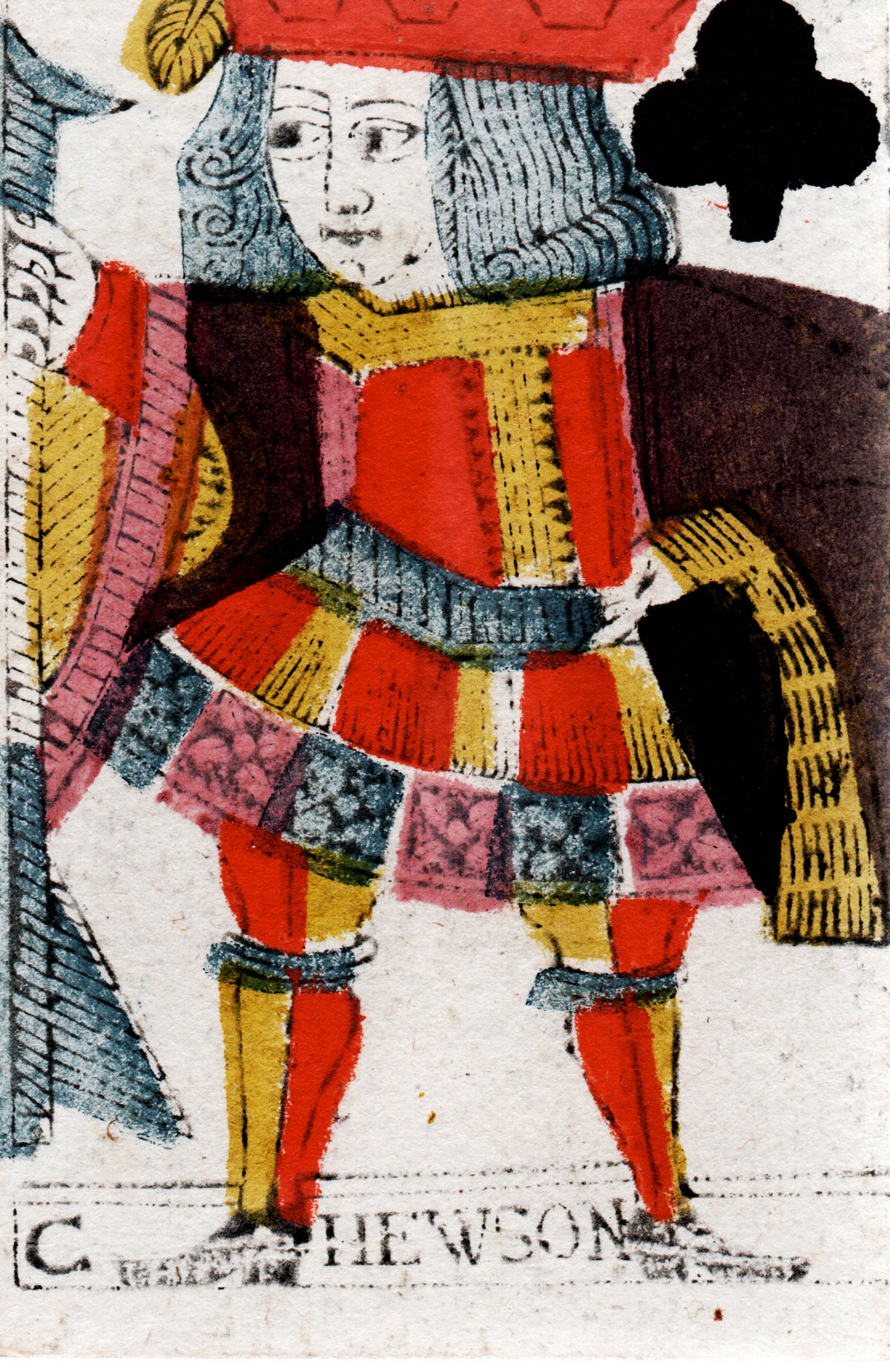
Above: close-up of the Jack of Clubs from the historic pack of English playing cards, featuring the name "C Hewson" at the bottom.

Above: close-up of the Queen of Clubs from the historic pack of English playing cards, featuring detailed and colorful artwork characteristic of the 1675 era.
Then we have the jack of clubs. In French packs, this card often shows the maker’s name on the paving that the jack stands on. Here the name “C Hewson” is shown.
This, in conjunction with a wrapper, is a wonderful find because the appearance of the name Hewson on playing cards has long been a puzzle. There are examples of cards with this naming in the British Museum and in the collection that began with George Clulow in Britain which he sold to the United States Playing Card Company. These latter cards are described by Catherine Perry Hargrave in her 1930 catalogue "A History of Playing Cards”.
Because of the existence of the Worshipful Company, which had the role of supervising the card making industry, we can be fairly sure that there is no genuine maker of playing cards with this name. This pack with a known maker stated on its wrapper makes this a certainty: the addition of the name Hewson is not showing the maker. It has been added for another reason, which we will guess at.
The most likely explanation is a form of satire making fun of the real John Hewson, referred to as “Cobbler Hewson” after his original trade. Hewson became a colonel in Cromwell’s army and, most significantly, he was one of King Charles I’s regicides: he had signed the court papers and was known as one of those responsible for the execution. Again, this pack is so closely affected by the history surrounding it.
A final surprise is that the pack is gilded. This is unusual (for the time and more so for a standard pack of cards) and strongly suggests that the pack was considered to be of the highest quality. This is of course exactly the kind of pack one would buy when expecting the King and Queen to be coming over for a game of cards.
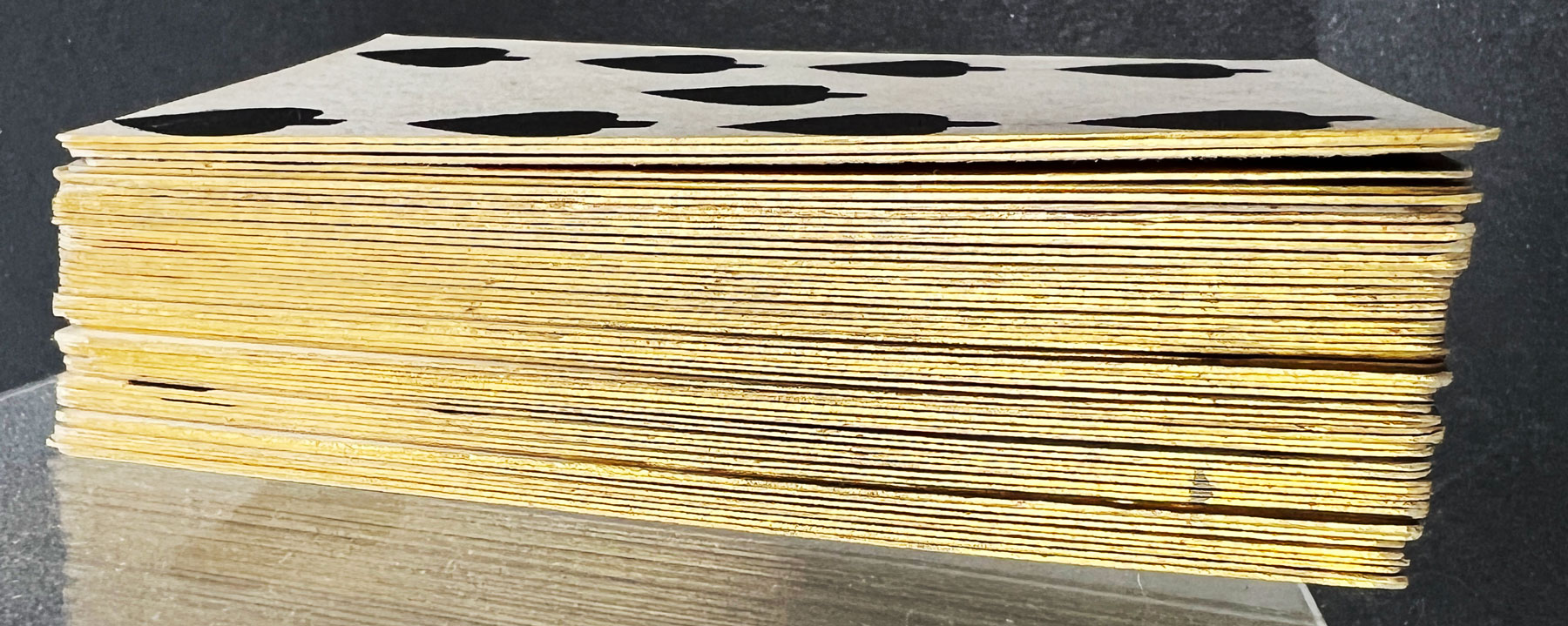
Above: side view of the historic pack of English playing cards, showcasing their gilded edges, indicative of high quality and craftsmanship.
We show one example below. The asymmetry and uneven pips are typical of the whole pack. If this is the highest quality, we seem compelled to draw some unflattering conclusions about the standards of English card makers at the time.

Above: close-up of the unevenly printed clubs on a card from the historic 1675 English playing card pack, highlighting the characteristic design of the period.
However, I am indebted to Roddy Somerville who notes that the pack may have been trimmed after its manufacture, to flatten the edges before applying gilt.
Returning to the story that made the news, I think that most people nowadays would doubt that the King and Queen really used these cards. In my childhood, “Elizabeth I slept here” became a familiar cliché for the claims made by seemingly every inn or small hotel in the countryside. So I see these cards with my cynicism fully operational!
In some ways, the main purpose of this article could be seen as saying that, for me, the claim is not so important. Instead, and largely through the passage of some 350 years, the cards themselves have become remarkable in their own right.
We can be certain that most cards were efficiently disposed of after they became used-looking because we see so few survivors. Those who are familiar with older cards will know that a secondary use is almost always part of their story because this secondary use secured their preservation. These cards seem very plausibly the best quality the buyer could find. The use by the King and Queen was then recorded at the time and again later both instances reminding the reader not to throw them out! Their very survival means that they surely had some story to tell, so their royal connection seems reasonable.
To summarise, this pack was likely used by King Charles II and Queen Catherine and it has plenty to say for itself in addition.
References
- BBC; King Charles II: Playing cards used by monarch found in attic
- Hargrave, Catherine Perry: A History of Playing Cards and a Bibliography of Cards and Gaming, Dover Publications, New York, 1966
By Paul Bostock
United Kingdom • Member since May 07, 2024 • Contact
Paul has been a collector of playing cards since his early teenage years, the mid 1970s. In the last 20 years or so he has specialised in standard English cards and their story. His collection, including many other English Standards, are featured on his website plainbacks.com. Paul is currently editor of Clear the Decks, the Journal of 52 Plus Joker, the American club for playing card collectors, and is a member of the IPCS Council, an EPCS member and a Past Master of the Worshipful Company of Makers of Playing cards, a City of London livery company.

Related Articles

78: The Standard English pattern - Part 2, the tricky bits
There are many less straightforward aspects to the designs of the English pattern, which need carefu...

77: The Standard English pattern - Part 1, the basics
A simple set of criteria for defining the standard English pattern
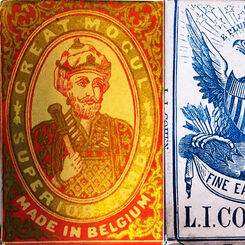
Moguls, Highlanders and Merry Andrews
Discover the historic origins and evolution of card naming and quality designations like ‘Moguls’ an...

Classification of Numeral Card Designs in French-suited packs
The classification of numeral cards in French-suited packs, covering various pip designs in over 400...
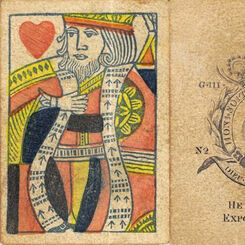
The Henry Hart Puzzle
Explore the intricate history and unique design variations of Henry Hart's playing cards, tracing th...

Playing Card Research Archives maintained by The Worshipful Company of Makers of Playing Cards
The Worshipful Company of Makers of Playing Cards maintains an extensive archive of materials from n...

Why our playing-cards look the way they do
Analysis of early playing card designs: origins, suit differences, standardization, technological ad...

Introduction to Collecting Themes
Playing cards can be broadly categorised into standard and non-standard designs, with collectors app...

House of Tudor
Randy Butterfield's House of Tudor playing cards feature detailed art in a high-quality collectible ...

Even More Trial and Error
“Even More Trial and Error” produced by the Worshipful Company of Makers of Playing Cards, United Ki...
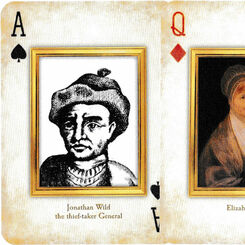
Trial and Error
Trial and Error produced by Lance Whitehouse, Past Master of the Worshipful Company of Makers of Pla...

Historical Characters
“Historical Characters” playing cards printed by Waddington’s for Thermawear Ltd, 1994.

Hewson
Antique English woodblock playing cards by a card maker named C. Hewson, mid-17th century.

Royal Old Maid Game
This antique card game features English kings and queens from William the Conqueror to Queen Victori...

Rowley & Co - “Monarchs of Europe”
In around 1775 Rowley & Co attempted to reform the traditional court cards to portraits of the kings...

Reynolds c.1830
Woodblock and stencil playing cards, produced by Reynolds & Sons c.1830-1850.

United Kingdom
Playing cards first arrived in England during the 15th century, but none have survived from such an ...
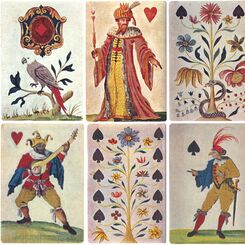
Silk Inlaid Playing Cards for Charles I
Silk Inlaid Playing Cards for Charles I
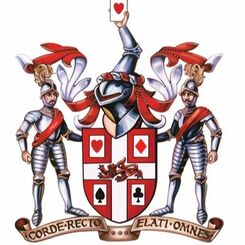
The Worshipful Company of Makers of Playing Cards
The Worshipful Company of Makers of Playing Cards was founded by Royal Charter in 1628.

Early English Playing Cards
Early examples of traditional, standard English playing cards of which the best known are those of H...
Most Popular
Our top articles from the past 60 days


